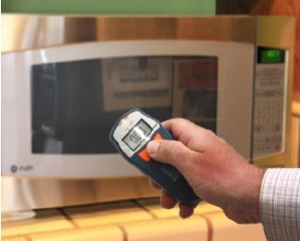Introduction:
Electrical safety is a paramount concern in both residential and commercial settings. The use of electrical appliances and equipment is an integral part of our daily lives, but with it comes the responsibility of ensuring that these devices are safe to use. Electrical test and tagging is a crucial process in maintaining a safe and compliant environment, minimizing the risk of electrical hazards and promoting a secure workplace or home.
In this article, we will explore the significance of electrical test and tagging, the process involved, and why it is essential for both businesses and individuals.
What is Electrical Test and Tagging?
Electrical test and tagging is a systematic process of inspecting, hydrant testing, and labeling electrical appliances and equipment to ensure they comply with safety standards and regulations. This practice is particularly important in workplaces, where the regular use of electrical devices is common, and compliance with safety standards is mandatory.
The Process:
- Visual Inspection: The first step in electrical test and tagging is a visual inspection of the equipment. This involves checking for any visible signs of damage, wear, or defects. Cables, plugs, and casings are examined for cracks, frays, or exposed wires.
- Electrical Testing: After the visual inspection, electrical testing is conducted using specialized equipment. This testing assesses the electrical safety of the appliance, identifying potential issues such as insulation resistance, earth continuity, and polarity.
- Tagging and Labeling: Once an appliance passes the inspection and testing, it is labeled with a tag indicating the inspection date, the name of the tester, and the next scheduled testing date. This tagging system provides a visible and easily traceable record of the equipment's safety status.
Why is Electrical Test and Tagging Important?
- Safety Compliance: Electrical test and tagging ensure that appliances and equipment comply with safety standards and regulations. Compliance is not only a legal requirement in many jurisdictions but also a fundamental step in creating a safe working or living environment.
- Risk Reduction: Regular testing helps identify potential electrical faults or hazards before they escalate. This proactive approach minimizes the risk of electric shocks, fires, and other safety incidents, protecting both individuals and property.
- Insurance and Liability: Many insurance policies require businesses to adhere to electrical safety standards. Regular test and tag companies demonstrate a commitment to safety, potentially reducing insurance premiums and protecting against liability claims in case of accidents.
- Equipment Longevity: Regular maintenance through test and tagging can extend the lifespan of electrical equipment. Identifying and addressing issues early prevents further damage, reducing the need for frequent replacements and saving on long-term costs.
Conclusion:
Electrical test and tagging is a critical component of maintaining a safe and compliant environment, whether at home or in the workplace. By systematically inspecting, testing, and labeling electrical appliances, individuals and businesses can significantly reduce the risk of electrical hazards, comply with regulations, and ensure the longevity of their equipment. Investing in electrical test and tagging is an investment in safety, providing peace of mind and protection against potential risks.
Source URL :- https://sites.google.com/view/servicecorptesttag/home







